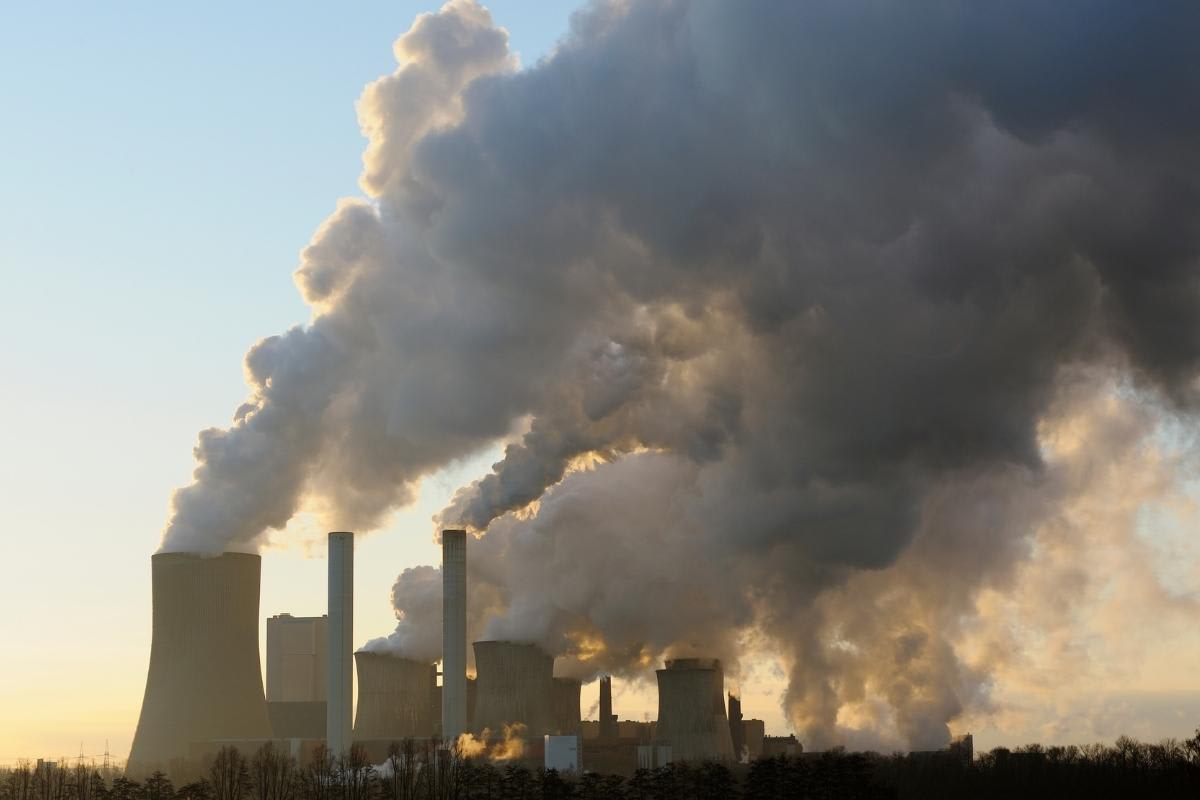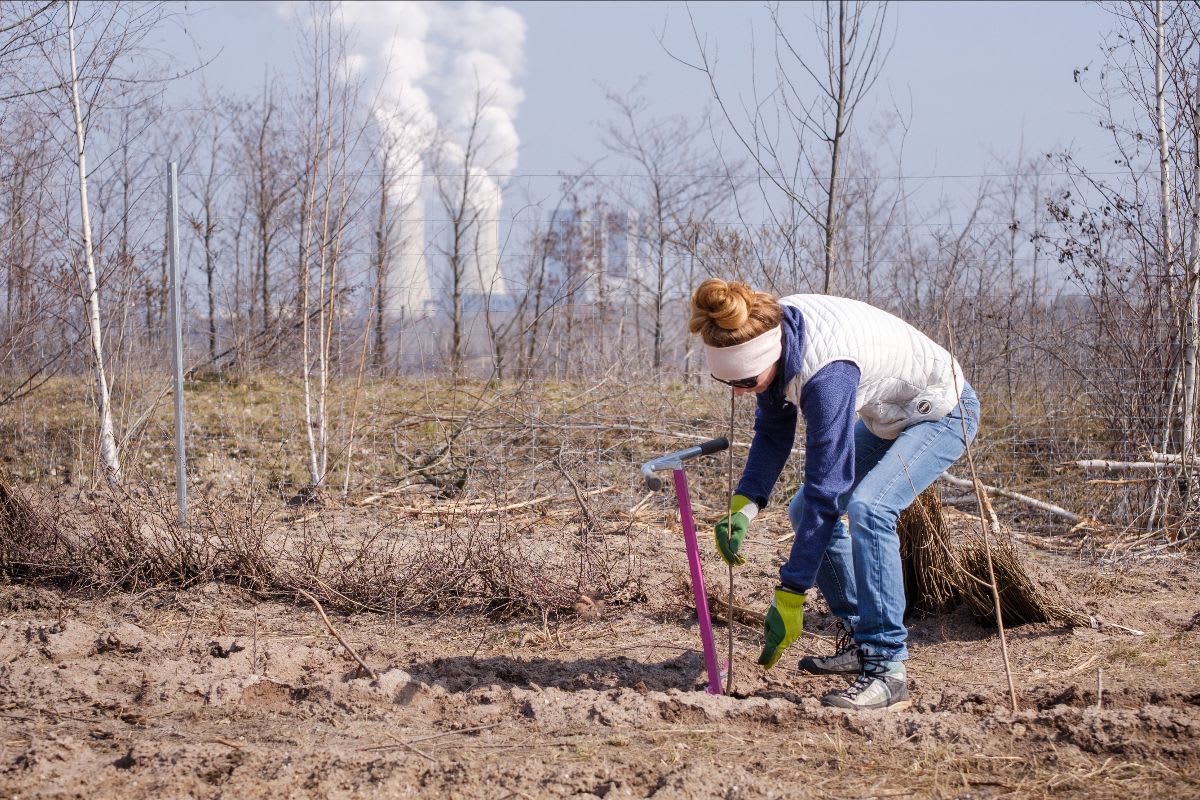CO2 compensation made easy: A beginner's guide to CO2 offsetting
CO2 compensation helps you offset your CO2 emissions. On average, we all produce 9 tons of CO2 per year in Germany. One way to compensate for CO2 is through the EU emissions trading system. At ForTomorrow, we use the emissions trading system to offset your CO2 footprint.
What is CO2 compensation?
CO2 compensation is the opportunity to offset the CO2 emissions you cause by financially supporting projects that remove or prevent CO2 from being released into the atmosphere.
We all produce CO2 through our lifestyle. We can reduce our CO2 footprint by living sustainably. However, it is difficult for us to avoid all CO2 emissions nowadays.
You can offset CO2 emissions that you cannot save in your daily life by supporting climate protection projects. These projects remove CO2 from the atmosphere. You can then claim the saved amount of CO2. This makes you CO2 neutral.
There are different CO2 compensation providers. Many operate in the voluntary market. At ForTomorrow, we operate in the mandatory market. This means that we use the EU emissions trading system to offset CO2. The official climate protection tool of the European Union.
It is important that the climate protection project you support actually saves CO2. Look closely at how your favored project wants to save CO2.
How does CO2 compensation work at ForTomorrow?
When you take out a climate subscription with us, we offset your CO2 emissions through effective climate protection in Europe. We give you a certificate with all the information.
First, you choose how much CO2 you want to offset. Our CO2 compensation is based on our two unique approaches. With us, you offset CO2 by:
- Buying and retiring CO2 rights from industry, such as coal-fired power plants. The industry can no longer use these CO2 rights. So we force them to emit less CO2. We thus reduce CO2 emissions in the EU.
- Planting mixed forests in Germany. These filter CO2 from the air. The CO2 you pull out of the atmosphere offsets your CO2 footprint and accelerates the energy transition in Europe. You can choose whether you want to buy and retire emissions rights, plant trees, or do both in combination. We offer you 3 packages to offset your CO2 emissions. You can decide for yourself which one is the right one for you.
You can choose whether you want to buy and set aside carbon credits, plant trees, or do both in combination. We offer you 3 ways to offset CO2: the subscription, a single donation or as a gift.
We now want to give everyone the leverage to effectively offset CO2 emissions they can’t yet avoid in their daily lives with us. That’s why we offer CO2 offsets.
At the same time, we give our subscribers the leverage to make industry more sustainable in Europe through our unique offset approach. We offer CO2 offsets for companies and for you as an individual.
Feel free to check out our FAQs if you have more questions, and you can also find a lot of information on our blog.
We would be happy if you would join us in promoting high-quality climate protection in Europe.
What does 1 tonne of CO2 compensation cost at ForTomorrow?
The CO2 compensation price per tonne is made up of the costs of tree planting and EU emission rights at ForTomorrow. The price reflects the high quality of our compensation measures.
If you want to compensate for 1 tonne of CO2 with emission rights and trees, it currently costs 70 euros per tonne. If you only want to compensate for 1 tonne of CO2 through trees, that would cost 25 euros. The cost for CO2 compensation with emission rights alone is 114 euros per tonne.
If we plant trees in Germany, it costs about 10 times as much as in developing countries. However, we can offer you the security in Germany, thanks to the Federal Forest Act, that your planted forest will also be preserved in the long term.
The price of emission rights has fortunately increased. For years it was only 6 € per tonne of CO2. This gave the economy hardly any incentives to emit less CO2. In the meantime, a tonne of CO2 in the emissions trading system costs over 82 € (excluding VAT). But even this is still too low for the transformation to a climate-friendly economy.
Sweden, for example, has a CO2 price of 114 € per tonne and is probably the first industrial nation to achieve climate neutrality.
We try to keep our subscription prices constant over longer periods of time. To do this, we purchase a larger quantity of emission rights at favourable times. In the next step, we predict how the CO2 price will develop over the year.
We communicate transparently at all times when we adjust our prices.
What does CO2 compensation bring you?
Currently, it is extremely difficult to live CO2 neutral. Electricity, clothing, public transport - if you use these products, you produce CO2. This will remain the case until we can operate in a CO2-neutral way in the future.
If you want to reduce CO2 emissions now, CO2 compensation can bring you a lot. You can compensate for the CO2 emissions that you cannot yet avoid in your daily life, e.g. with ForTomorrow.

When does CO2 compensation make sense for you?
There are a few things to consider when it comes to CO2 offsetting. First of all, check whether an offset measure can really save as much CO2 as promised. Also check if your offset provider uses your amount for the desired purpose.
Let’s briefly examine what these two dimensions mean.
1. How much CO2 is really offset by the project?
It is important that an offset provider states exactly how much CO2 they are offsetting for your money. Good CO2 offsetting can cost a bit more. For that you get a higher security.
If you plant trees, find out where they are planted. Are the forests really planted? Are the forests protected in the long term? Where are the forests planted - can you control it yourself?
A second problem is CO2 ‘double counting’. Put simply, many countries have their own climate targets. They count themselves when CO2 is compensated on their territory through forests and other offsets.
If you now compensate in another country, this amount can be counted twice. Once for your personal CO2 balance, once for the CO2 balance of the country in question. The climate crisis then rages on. But we think we have solved it.
Here we recommend: Offset where the CO2 emissions occur. With ForTomorrow we focus on Germany and Europe.
2. Are your funds really used for CO2 compensation?
For offsetting we recommend: Make sure that your favorite company is a non-profit organization. Then it is ensured by law that at least two thirds of the donations go to the charitable goals.
At ForTomorrow we have set ourselves an even higher limit of 85%. We use a maximum of 15% of the donations for ForTomorrow expenses e.g. office, salaries or software. At least 85% we use to buy and set aside European emission rights. And to reforest forests in Germany.
In our Impact Report, we tell you every month exactly how we use your donations.

How does CO2 compensation work effectively?
In short: A CO2 compensation measure makes sense if it works. Pay attention also to an ‘additionality’. That means: Without the mechanism of CO2 compensation, the climate protection project would not exist.
It must be an additional climate protection measure. An existing forest does not meet this criterion. Its CO2 reduction capacity is probably already included in the country’s CO2 balance. That is why we are always reforesting in Germany. We also buy up emission rights and set them aside. This is how we prevent CO2 from being emitted in the EU.